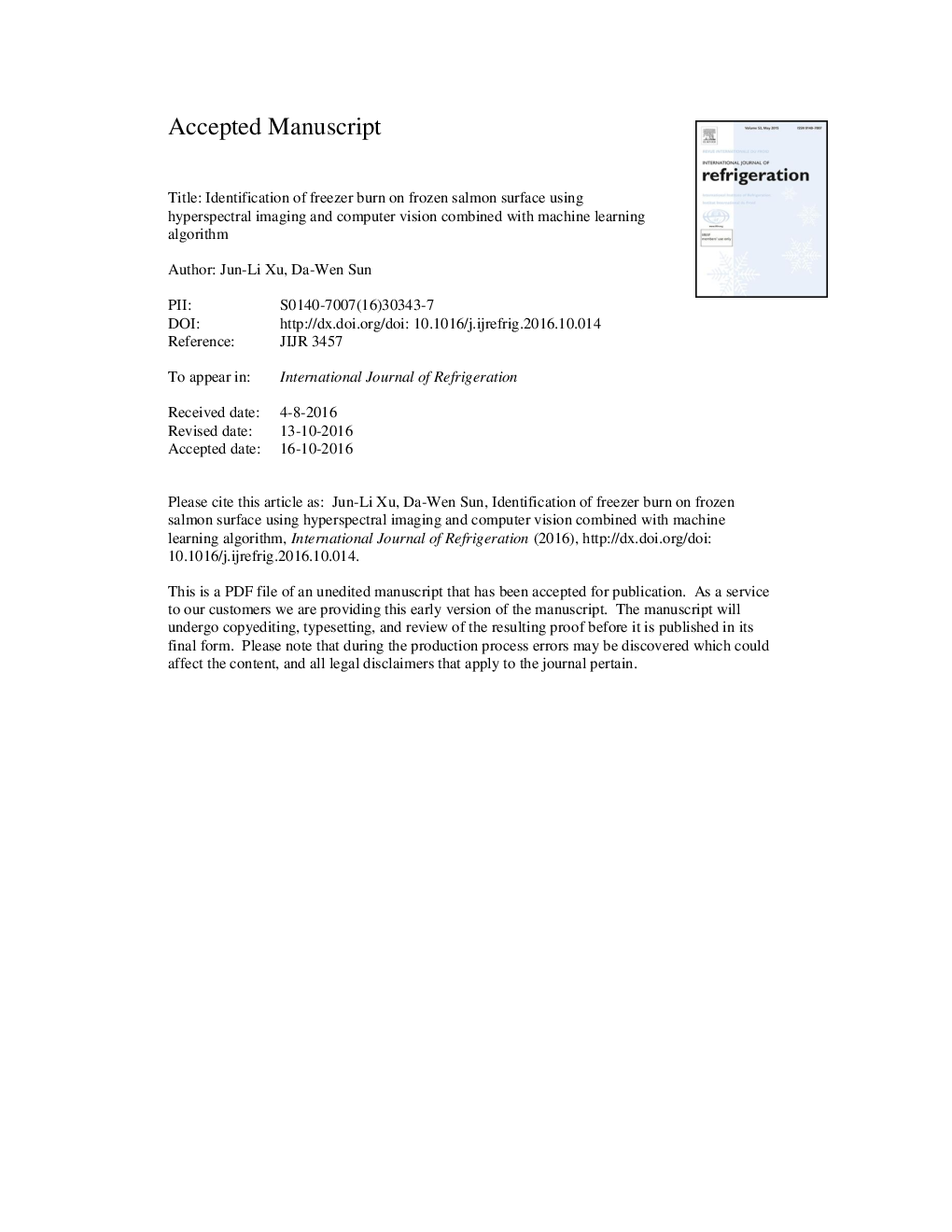| Article ID | Journal | Published Year | Pages | File Type |
|---|---|---|---|---|
| 5017304 | International Journal of Refrigeration | 2017 | 43 Pages |
Abstract
This study explored the potential of computer vision system (CVS) and hyperspectral imaging (HSI) technique covering spectral range of 900-1700ânm for identifying freezer burnt salmon fillets after frozen storage. Local binary pattern (LBP) descriptor was applied for the RGB image classification. Reflectance spectra were obtained from various positions surface and pretreated using the standard normal variate (SNV) transformation. TreeBagger classifier was used to build classification models for recognition and authentication of the freezer burnt flesh. The results suggested that hyperspectral discrimination performed much better than CVS with the correct classification rate (CCR) of 0.905 in validation and CCR of 0.945 in cross-validation. The effective wavelengths were selected based upon the feature importance in the TreeBagger model and the corresponding optimized model yielded CCR of 0.914 in validation and 0.978 in cross-validation. Overall, the outcome suggested the capability of HSI for rapid categorization of damaged regions on frozen salmon.
Related Topics
Physical Sciences and Engineering
Engineering
Mechanical Engineering
Authors
Jun-Li Xu, Da-Wen Sun,
